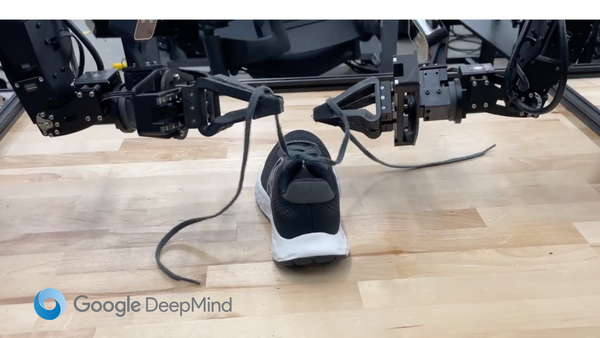Military Controversies, Climbing Innovations, and Budget-Friendly Humanoids
Get the latest humanoid robot news: An armed Chinese robot, technology to help robots climb skyscrapers, and Unitree's G1.

Good morning! Today, we have one semi-frightening and two fascinating updates on humanoid robotics.
First, a viral video featuring an armed Chinese robot dog has sparked intense debate. Second, researchers at the University of Bristol have unveiled new technology to help robots climb skyscrapers. Third, Unitree has introduced the G1, which you can buy today!
Before you dive into these stories, check out the latest article 👇
Learn why the number of humanoid robot companies will continue to grow.
Viral Video of Armed Chinese Robot Dog Is Scary
A recent viral video showing Chinese soldiers walking robot dogs equipped with machine guns during the "Golden Dragon" military exercise has stirred significant controversy and discussion.
This joint exercise between China and Cambodia showcased advanced military technology, including these weaponized quadrupedal robots, raising ethical concerns and highlighting the ongoing debate over the militarization of robotics.
WHAT YOU NEED TO KNOW
- Demonstration of Advanced Technology: The "Golden Dragon" exercise featured state-of-the-art military technology, including robot dogs with machine guns. While not firing their weapons, these robots demonstrated their mobility and potential in modern warfare scenarios.
- Ethical and International Concerns: The use of armed robot dogs has sparked ethical debates and international concerns. Similar concepts have been explored in the US, with the Pentagon and companies like Ghost Robotics testing weaponized robotic systems.
- Robotics Industry Stance: Major robotics companies like Boston Dynamics oppose the weaponization of their products. They have publicly pledged not to arm their robots or support others, emphasizing ethical considerations in using robotics technology.
WHY YOU SHOULD CARE
Understanding the implications of the Chinese military's use of weaponized robot dogs is critical for several reasons:
- Technological Advancements in Warfare: The deployment of advanced robotic systems in military exercises signifies a significant shift in modern warfare capabilities. This development underscores the need to stay informed about emerging technologies that could redefine combat strategies and military tactics.
- Ethical and Legal Considerations: Weaponizing robots raises profound ethical and legal questions. Robotics companies' stance against arming their products highlights the industry's recognition of these concerns, which are crucial for policymakers, military leaders, and technologists to address.
- Global Military Dynamics: The collaboration between China and Cambodia and the integration of cutting-edge technology into military operations reflect broader geopolitical trends. Monitoring these developments is essential for understanding the evolving landscape of global military power and the potential implications for international security.
New Technology Could Help Robots Climb Skyscrapers
Researchers at the University of Bristol have developed an innovative snail-based sliding suction method for climbing robots. This new technique mimics the adhesive properties of snail slime, providing a smoother and more efficient climbing mechanism compared to traditional walking robots.
The method shows promise for use in industries where vertical mobility is essential, such as structural inspection and cleaning windows on skyscrapers.
WHAT YOU NEED TO KNOW
- Snail-Based Adhesion: The new climbing method uses a rapidly evaporating water-based substitute for snail slime. This enables robots to adhere to and move smoothly along vertical surfaces, overcoming the clunkiness associated with walking mechanisms.
- Impressive Load Capacity: In tests, the snail-inspired robots could carry a payload of 2.2 pounds, approximately ten times their weight, demonstrating high adhesion efficiency and safety with low energy consumption.
- Current Limitations and Future Enhancements: The sliding suction method works best on flat surfaces. Future improvements may include incorporating suction pumps and additional suction cups to handle rougher, more varied exterior surfaces.
WHY YOU SHOULD CARE
Understanding the development of snail-based climbing robots is essential for several reasons:
- Enhanced Safety and Efficiency: By providing a smoother and safer climbing method, these robots could significantly reduce the risk associated with tasks that are hazardous for humans, such as structural inspections and maintenance.
- Technological Innovation: Adapting biological principles, like snail slime adhesion, to robotics represents a significant step forward in bio-inspired engineering, opening new possibilities for robot design and functionality.
- Potential Industry Applications: As improvements are made, these robots could find widespread use across various industries, enhancing operational efficiency and safety in environments where vertical mobility is crucial. This could lead to new market opportunities and advancements in robotic capabilities.
Got $16K? Well, Now You Can Buy a Humanoid Robot
Unitree revealed the G1, a 4-foot-tall humanoid robot priced at $16,000. While the robot showcases impressive features for its price, its practical applications remain unclear. Unitree, known for budget-friendly robotics, aims to offer an affordable option in the humanoid robot market despite some limitations and ongoing development.
WHAT YOU NEED TO KNOW
- Affordable Robotics: The Unitree G1 costs $16,000, making it a budget-friendly option in the humanoid robot market. Its small size and lightweight design help keep costs low.
- Capabilities and Limitations: The G1 features a 9000 mAh battery lasting two hours, an Intel RealSense depth camera, and Livox lidar for vision. It can lift up to 2 kg but is limited in performing complex tasks reliably.
- Development and Use Cases: The robot can perform basic movements and withstand minor impacts, but its practical uses are still being refined. Potential buyers must engage in significant programming to make the G1 functional for specific tasks.
WHY YOU SHOULD CARE
Understanding the release of the Unitree G1 is essential for several reasons:
- Market Accessibility: The G1’s affordability opens up the humanoid robot market to a broader audience, potentially accelerating adoption and innovation in various sectors.
- Technological Progress: Despite its limitations, the G1 represents significant technological progress in budget-friendly robotics, showcasing how advanced features can be integrated into cost-effective designs.
- Future Potential: The ongoing development and refinement of the G1 highlight the evolving nature of humanoid robotics. Staying informed about such advancements can help stakeholders anticipate future trends and opportunities in robotics applications.



